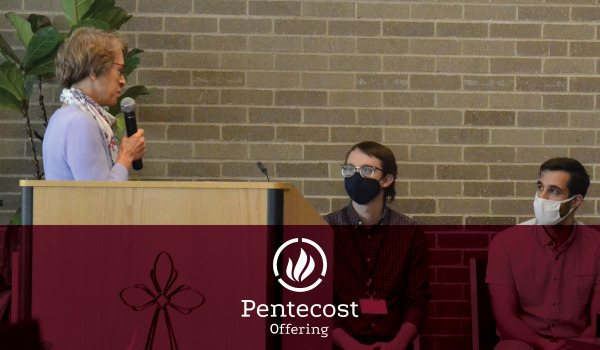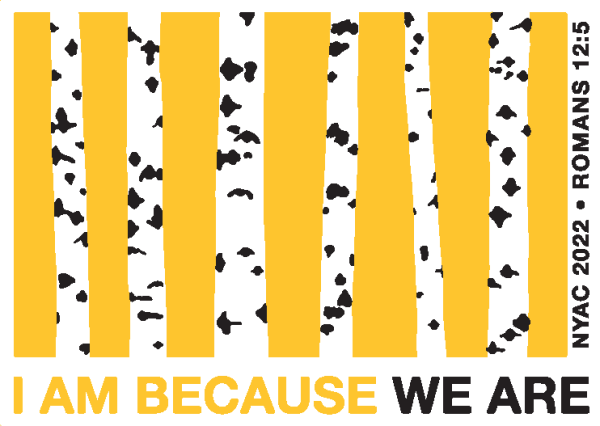
A sermon starter written by Nancy Sollenberger Heishman, director of the Office of Ministry, for the 2022 Pentecost Offering
“When the day of Pentecost had come, they were all together in one place.” ~Acts 2:1
When the day of Pentecost had come, the disciples, numbering 120, were all together in one place. All together? In one place? What might that have meant for them? What could it mean for us? From the gospel stories we know that being “all together” for the disciples in that place signified a community with no small number of differences. Within the original 12 disciples and those who had accompanied them in following Jesus, there were significant differences including culture, political leanings, conflicting personalities, economic and social status, proven loyalty, cowardice, and even betrayal regarding Jesus, and on and on. What must “all together” have meant to them? How comfortable was being “in one place” for disciples struggling with the trauma of Jesus’ public execution followed by his astounding resurrection?
How about for us in our congregations and communities as we are “all together in one place”? Are we relieved to finally be all together in one physical space even while still amid a seemingly unending pandemic? Does “in one place” include only physical space in church buildings or are we embracing our gathering place of worship as including virtual space? Are we increasingly finding ourselves out in new neighborhood spaces as we meet the challenge to embody Jesus’ presence in the neighborhood? What has changed in the last few years in our being “all together in one place”? What still needs to change in and among us as we gather so that we are more faithful to Jesus’ call?
Certainly, no effort is needed today to find differences in society and even the church that prompt alienation, segregation, and hostility, even a silent contempt of the other. Negative reactions to differences are often motivated by fear and can result in anger. Leaders can stoke those fears and fuel anger, but Pentecost Christians are called to reshape the current narrative based on an enthusiastic embrace of the story of the Holy Spirit’s powerful anointing.
The Pentecost story was certainly one of proximity, which is so essential to a faithful following of Jesus. At the recent graduation at Eastern Mennonite University (Harrisonburg, Va.), Bryan Stevenson, founder of the Equal Justice Initiative and author of the book, Just Mercy, began the commencement address with a call to graduates to live out their Christian faith through a very intentional proximity with the “least of these” who are in most need of Christ’s compassion and justice. Choose to be “all together in one place” with those you might not normally encounter, he suggested.
In a society where our lives are increasingly segregated in neighborhoods of homogeneity, the choice of intentional proximity to those in need of care puts us in the center of the Pentecost story where the Holy Spirit’s power transforms lives, creating God’s shalom. It does so as we learn to know our neighbors, sharing their joys and pains, hearing their dreams and longings, responding with the good news of Jesus.
Stevenson’s address was a fitting call to young leaders to embrace Pentecost’s power to prophetically do justice, love kindness, and walk humbly with God. It will require living in deliberate proximity with those whose differences may challenge an easy togetherness. Proclaiming a narrative of Christ’s embracing welcome can counter tropes of fearful anger. Persistently holding on to a divinely inspired mission, Pentecost-powered hope keeps the foundation of one’s shared place spiritually resilient. Saying a bold “yes” to Jesus’ inconvenient and often uncomfortable call to costly discipleship keeps Pentecost power alive and vibrant. All this speaks to what can happen when disciples of Jesus are deliberately and delightfully and surprisingly “all together … in one place.”
Find this sermon starter, offering announcements, and other worship resources for the Pentecost Offering of the Church of the Brethren (suggested date June 5) or give an offering today at www.brethren.org/give-offering.


